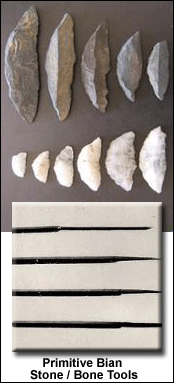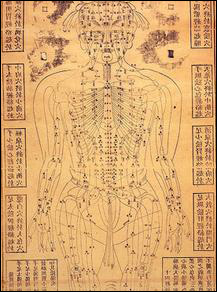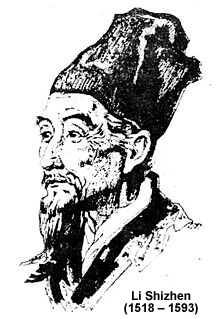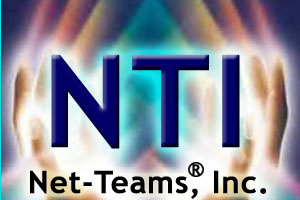Submitted by Teo Graca
| RSS Feed
| Add Comment
| Bookmark Me!
Traditional Chinese medicine (TCM) uses acupuncture as a technique for balancing the flow of energy or life force known as qi or chi (CHEE). It is believed to flow through channels, also called pathways or meridians, in your body. Inserting needles into specific points along these meridians will re-balance your energy flow and is used to control pain and help the body heal itself.
Acupuncture - Long History Of Use

The Chinese believe that the practice of acupuncture began during the Stone Age when stone knives or sharp edged tools were used to puncture and drain abscesses.* Although the start date of acupuncture's invention in ancient China and how it evolved from early times are uncertain, sharpened stone and bone tools, known as Bian shi, have been found in China. These artifacts support the idea that the practice dates to the Neolithic, or as the Chinese believe, earlier in the Stone Age.
Despite improvements in metallurgy centuries before, it was not until the 2nd century BCE during the Han Dynasty that stone and bone needles were replaced with metal. The earliest examples of metal needles were found in a tomb dated to c. 113 BCE. The earliest example of the unseen meridians used for diagnosis and treatment are also dated to the second century BCE. The earliest reference to therapeutic needling occurs in the historical Shiji text (Records of the Grand Historian).
The first medical college in China (The Imperial Medical College) was founded in 600 AD, which was established to administer medical research and to train doctors. Acupuncture and moxibustion, as well as herbal medicine, formed the basis of the curriculum.*
The National Center for Complementary and Alternative Medicine (NCCAM) has supported extensive research on acupuncture over the past 10 years. Studies have looked at its effect on specific health conditions and how it affects the brain and nervous system; the neurological properties of meridians and acupuncture points; and methods for improving the quality of acupuncture research.
Recent studies have found that acupuncture:
- Helps alleviate nausea in cancer patients undergoing chemotherapy.
- Relieves pain and improves function for some people with osteoarthritis of the knee and complements standard medical care.
- Helps in treating chronic lower back pain.
- Can be useful in treatment of post-traumatic stress disorder (PTSD) symptoms.
- May improve pregnancy rates following in vitro fertilization (IVF).
- May or may not be of value for many other conditions, including irritable bowel syndrome and some neurologic disorders.

Another notable push forward in the west for acupuncture is Soulie de Morant's masterpiece "Chinese Acupuncture" - the most detailed study of acupuncture available in a Western language. It was nominated for a Nobel prize in 1950 and provided the foundation for French acupuncture. The text is divided into 5 parts: the energetics of acupuncture, the application of the energetics, physiology, meridians and points, and treatment. The book is a unique historical document, but more than this, it is the most practical of texts and has already served several generations of clinicians well.
Meridians
There are about 400 acupuncture points and 20 meridians connecting most of the points. The meridians include 12 "regular" channels, with each meridian corresponding to each organ; nourishing it and extending to an extremity. There are also 8 "extraordinary" channels, 2 of which have their own sets of points. The remaining ones connect points on other channels.
The 12 standard meridians, also called Principal Meridians, are divided into Yin and Yang groups. The Yin meridians of the arm are Lung, Heart, and Pericardium. The Yang meridians of the arm are Large Intestine, Small Intestine, and Triple Warmer. The Yin Meridians of the leg are Spleen, Kidney, and Liver. The Yang meridians of the leg are Stomach, Bladder, and Gall Bladder.

The 8 extraordinary meridians are different from the standard 12 organ meridians in that they are considered to be storage vessels or reservoirs of energy and are not associated directly with the internal organs. These channels were first systematically described by Li Shizhen in his book "Compendium of Materia Medica" in 1578. Li Shizhen is considered one of the greatest Chinese doctors, polymaths, scientists, herbalists and acupuncturists in history.
Will acupuncture work for you?
I don't know, but with the extensive history of use and modern science correlating and proving many of the claims that it is effective, it is definitely worth a try, especially when nothing else works.
*Professor George Lewith is a professor at the University of Southampton - some facts in this article are referenced from his article "Acupuncture - Its Place in Western Medical Science." (published Apr. 15, 2009)
|
